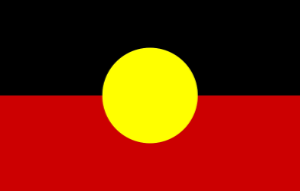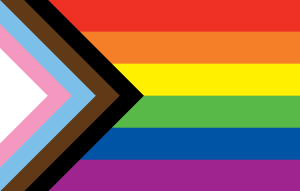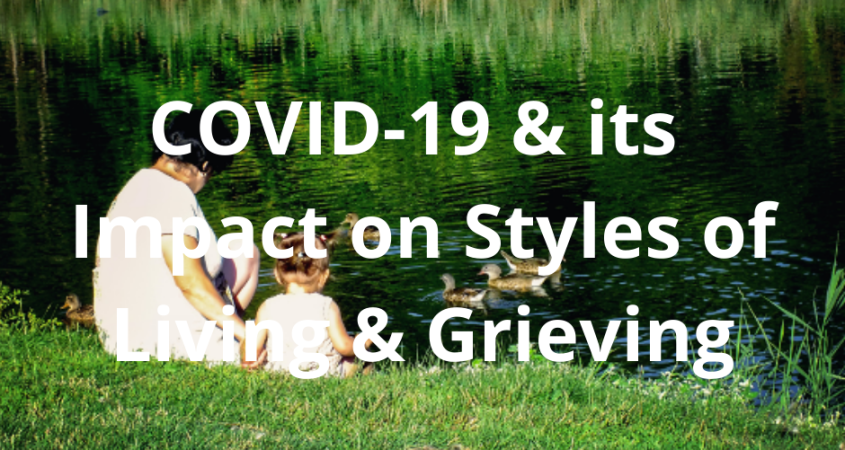COVID-19 & its Impact on Styles of Living & Grieving
Goal or Process Orientation, or a combination of both
As I write, I’m very much aware that we’ve lived with our changed social environment for many months, with no real end in sight. We probably have more in common now than in previous decades, but there are still differences in the way we are reacting. These differences are the result of our mental and physical health, financial situation, our support networks, or absence of, and our previous ‘style’ of being in the world.
By the time we reach adult life we will have developed a style of living that is an expression of our genetic inheritance, social conditioning and the environment in which we find ourselves.
In professional settings our personal style might be described in fairly black and white terms as either goal oriented or process oriented. Hopefully, many of us are a combination of both, while others might have a dash of one version and a stronger leaning towards the other.
But what does either term really mean? And how does our personal ‘style’ help or hinder us in times of crisis, such as bereavement, or a pandemic? Let’s begin by examining goals, and goal orientation, then explore what we mean by process and process orientation. We’ll eventually explore how goal and process orientation affect the way we grieve and the way we deal with our current changed social environment.
Birth is the beginning of life for all of us, and death is the eventual outcome. Our lifespan, the trajectory from birth to death, is the what or goal of our coming into existence. The way we use the time between birth and death is the process of our lives, the how of living. Let’s think about goals and process in more detail.
Goal Orientation
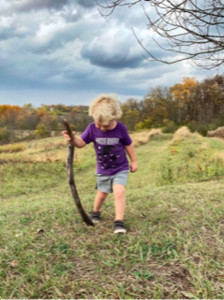 According to the dictionary, a goal is the aim or outcome of a purposeful activity, and usually involves drive, determination, industry and ambition. Some babies display goal orientation almost from the moment they draw breath.
According to the dictionary, a goal is the aim or outcome of a purposeful activity, and usually involves drive, determination, industry and ambition. Some babies display goal orientation almost from the moment they draw breath.
They are active, often have well developed motor skills, and tend to push the boundaries as they explore their environment. They enjoy being challenged, and delight in having their successes acknowledged and rewarded. Goal oriented children can be visually appealing, each developmental milestone and achievement clearly observable. They are ‘in life’ in a very physical way. The down side is that they can be exhausting, constantly needing new challenges and stimulation to prevent the onset of boredom.
Goals are important, and especially so when we are grieving or in the midst of a socially unfamiliar crisis like enforced social distancing. Goals can help us structure time and give meaning to each day, each week, each year. They can be a reason for getting out of bed each morning, for going to work or school, for studying, for learning a trade, for earning a living, for saving money, for developing skills, for developing relationships, and can help us achieve our potential. We all have uniquely different abilities and skills, and consequently, different life goals.
Our goals can be positive or negative, realistic or unachievable. Unrealistic goals inevitably cause disappointment, and sometimes despair. They can also set us on a path of castigating ourselves, of blaming others, or perhaps drowning in a pool of self pity when we fail.
Some goal setting is innate, but the goal setting I’m referring to in this context usually begins in a family setting. The goals we choose, even from a very young age, can be the result of parental modelling or expectation, and aspects of our behaviour that they reward or punish. They are also influenced by teachers and the education system, and by culture, religion and geography. Traditional myths and fairy tales also play a part, as do movies, TV, the books we read, and the company we keep.
Some of us may decide early in life that we want to be rich or famous, strong and powerful, beautiful and popular, academically successful, brilliant at sport, or to live happily ever after, whatever that means. Some of these goals are simply dreams, fantasies, or wishful thinking, and some are realistic.
 As a small child I dreamed of being a ballerina like Margot Fonteyn, or a concert pianist, but that was never going to happen. I never had dancing lessons, we didn’t own a piano, and physical co-ordination was not my strong suit, so my endeavours were limited to pirouettes in the privacy of our home, and pretending to play the music I heard on the radio. My parents didn’t ridicule my efforts, nor did they lead me to believe I could fulfil my dreams; they simply smiled and hugged me after each ‘recital’ or performance.
As a small child I dreamed of being a ballerina like Margot Fonteyn, or a concert pianist, but that was never going to happen. I never had dancing lessons, we didn’t own a piano, and physical co-ordination was not my strong suit, so my endeavours were limited to pirouettes in the privacy of our home, and pretending to play the music I heard on the radio. My parents didn’t ridicule my efforts, nor did they lead me to believe I could fulfil my dreams; they simply smiled and hugged me after each ‘recital’ or performance.
I’ve never felt comfortable with the assurance many loving parents give their children that ‘you can be anything you want if you work hard’. My discomfort comes from knowing that the statement isn’t a truth. It may be a hope, a wish, a way of saying ‘I think you’re great’, or an attempt to give encouragement to someone whose confidence has waned, or whose confidence may never have seen the light of day. Perhaps it’s a way of unconsciously pushing our children to fulfil our own unrequited dreams.
As loving parents, it’s more useful and empowering for us to help each child identify their personal style, their strengths and weaknesses, their creative potential, and their physical and intellectual abilities. Once those are ‘on the table’, we can talk with our children about their hopes and dreams. How do their hopes and dreams marry with their physical, intellectual and creative abilities, and their personality? Are they compatible, or do goals need to be adjusted so they are a better fit?
If goals are to enhance feelings of wellbeing they need to be achievable, particularly now as we struggle to find, and live with, our new normal.
Process Orientation
lmost from the beginning of life, some children’s way of being in the world is process oriented. These children are often dreamers, the ones who stare fascinated at butterflies and other insects, whose senses seem to respond to texture, light and sound, and who stay still long enough to listen to family stories. The internal world of their imagination responds quickly to sensory stimulation and their enjoyment is often obvious to the observer as facial expressions change, or their body moves expressively to an internal beat. These children often become adults who stop ‘to smell the roses’ as the saying goes, who grapple with existential problems, philosophical concepts and ethics, political correctness, and the impact of their behaviour on others. They may be intuitive, and trust their ‘gut feeling’. They may give us more access to their feelings than goal oriented folk and meet more of our need for emotional intimacy.
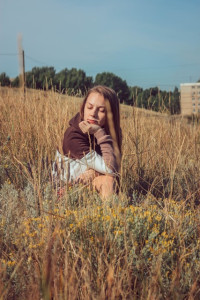 As they move through each developmental ‘stage’, process oriented children, and adults, need time to internally process the effect of each significant event. They may react with irritation if solutions to problems they have trusted us with are offered too quickly, especially so if they are given as clichéd responses like ‘pull your socks up, put it all behind you, get on with life, buck up and think of those worse off, it can’t be THAT bad, every cloud has a silver lining, everything happens for a reason, it’s God’s will’ and so on.
As they move through each developmental ‘stage’, process oriented children, and adults, need time to internally process the effect of each significant event. They may react with irritation if solutions to problems they have trusted us with are offered too quickly, especially so if they are given as clichéd responses like ‘pull your socks up, put it all behind you, get on with life, buck up and think of those worse off, it can’t be THAT bad, every cloud has a silver lining, everything happens for a reason, it’s God’s will’ and so on.
Process oriented folk may be slower than goal oriented children or adults to arrive at an acceptable solution to their problems, or the world’s problems, and they may say things like ‘I need to sleep on that’, or ‘leave it with me and I’ll get back to you’ before deciding on the most appropriate next steps. Their feeling response to life events and situations is more often foreground than the quick thinking, action focused response of their goal-oriented counterparts.
Neither response is right or wrong, in most situations, but sometimes, one orientation is more helpful than the other, so let’s examine the pros and cons of each style of being, and the benefits of combining both.
Some Pros and Cons of Goal Oriented and Process Oriented ‘Styles’
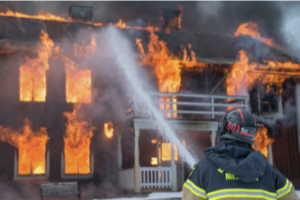 When immediate issues of safety and survival are involved, goal orientation is essential. For example, preventing disaster or rescuing survivors from disasters that have already occurred. As parents of young children, even the most process oriented of us will act quickly to prevent our children putting their hand on a hot stove, swallowing poison, or choking the cat.
When immediate issues of safety and survival are involved, goal orientation is essential. For example, preventing disaster or rescuing survivors from disasters that have already occurred. As parents of young children, even the most process oriented of us will act quickly to prevent our children putting their hand on a hot stove, swallowing poison, or choking the cat.
We want people in parental type roles, those in authority, to act quickly to keep us safe as individuals and as a community. For example, paramedics, firemen, lifesavers, policemen and policewomen, doctors and nurses, security guards, umpires and referees, FACS, and of course, politicians. Our expectations are frequently met, but occasionally, and perhaps inevitably, the implicit role instruction of ‘act first, think later’ backfires, perhaps literally as well as figuratively. Most of us have examples we could share at this point.
Future mistakes are less likely to occur if, post event, those involved are given a safe, well-structured opportunity to debrief, to ‘process’ outcomes and resulting thoughts and feelings. If the environment is relatively non-threatening, people can express regret, feel supported and understood, and hopefully examine environmental and unconscious factors that may have contributed to decisions and actions that have resulted in a distressing outcome. In other words, even the most action oriented folk in the most action oriented roles can benefit from opportunities to slow down, process behaviour, thoughts and feelings, then identify what has been learned and how that learning will be used in future.
Gender also plays a role in the occupations we choose or are pushed into, in our reactions to situations, and our willingness to process outcomes. Biologically, male brain chemistry tends to influence strategic planning, and evaluating action. Female chemistry tends to influence process and the impact of actions on thoughts and feelings. But that’s a simple, stereotypical way of understanding ‘style’. Some women are more goal and action oriented and some men more process oriented, while many others are a mix of both. The ‘gene pool’, gender and biochemistry are certainly part of all orientations, and family conditioning and social environment another aspect.
A Combination of Styles
I think a combination of styles is close to the ideal, while acknowledging that most of us will have a leaning a little more to one style than the other.
We know that goals are important if we are to survive as individuals, as families, as communities and as nations. As I said at the beginning of this article, goal setting gives our lives structure and purpose, and achieving goals provides important moments for celebration. When matched to our abilities, ambitious goals are fine as long as each step on the path is small enough to be achievable, and energises us for the long haul.
Folk wisdom tells us we need to ‘live fully in the moment, remember, value and learn from the past, and plan for the future.’ Mindfulness, a way of being that can encompass both ‘styles’, is a mental health practice that was once the province of counsellors and participants in self-awareness groups. Currently, book shops contain a plethora of age appropriate explanations and instructions that make this way of being accessible to all of us from cradle to grave, if we are so inclined.
Mindfulness exercises are not everyone’s cup of tea, or schooner of beer. Some folk process all life events instinctively while sweating at the gym or playing sport, others by sharing experiences with family or friends. Some do so while writing or reading, cooking, gardening, making or mending things, listening to music, or walking the dog. The list is endless. We all need to do what fits for us.
Styles of Being and Bereavement
 As we grieve, or deal with any life crisis, we all regress and feel more vulnerable on the inside than our chronological age. People may observe our behaviour as an exaggerated version of what we were before ‘the event’. So, if we were goal oriented before, we may become more so as a way of managing pain. Goal oriented ‘grievers’ are likely to view grief as a problem to be solved and may search the internet or read books that provide management strategies. They may exercise energetically until tears are expressed via the sweat of their whole body rather than from their tear-ducts. Uninformed observers may think these folk aren’t grieving, but that IS their grief. Goal oriented grievers may make potential helpers uncomfortable because they can’t find a role to play that takes care of their helplessness.
As we grieve, or deal with any life crisis, we all regress and feel more vulnerable on the inside than our chronological age. People may observe our behaviour as an exaggerated version of what we were before ‘the event’. So, if we were goal oriented before, we may become more so as a way of managing pain. Goal oriented ‘grievers’ are likely to view grief as a problem to be solved and may search the internet or read books that provide management strategies. They may exercise energetically until tears are expressed via the sweat of their whole body rather than from their tear-ducts. Uninformed observers may think these folk aren’t grieving, but that IS their grief. Goal oriented grievers may make potential helpers uncomfortable because they can’t find a role to play that takes care of their helplessness.
Process oriented grievers are likely to express grief in ways that we are more familiar with – tears, sadness, reduced energy, the need to talk to a compassionate other, or to shut themselves away in a safe cocoon. Helpers are usually more comfortable with this style because they can see a role for themselves – cooking, cleaning, listening, lawn mowing, gardening, child minding and so on.
A good bereavement counsellor will understand and support the grieving person’s familiar coping style, as long as that style isn’t harmful. Over time, they will slowly, and gently, weave in a way of creating balance. For process-oriented souls they will introduce achievable goals, time structure, and client centred action. For goal oriented folk, they may add a variety of acceptable ways of expressing thoughtful feelings, and creative ways of valuing and using memories.
Styles of Being and the current Pandemic
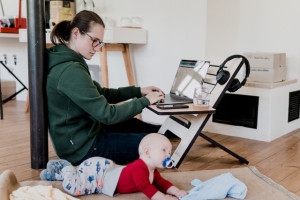 When the advent of the Covid-19 pandemic was first announced, most of us went into goal orientation along with the Prime Minister and his colleagues. We all wanted to stay safe, to stop the spread becoming unmanageable, and we wanted a vaccine, yesterday. Anxiety made us feel regressed and vulnerable; we had never been in a situation like this before. The present was concerning enough to distract us from thinking about the path ahead.
When the advent of the Covid-19 pandemic was first announced, most of us went into goal orientation along with the Prime Minister and his colleagues. We all wanted to stay safe, to stop the spread becoming unmanageable, and we wanted a vaccine, yesterday. Anxiety made us feel regressed and vulnerable; we had never been in a situation like this before. The present was concerning enough to distract us from thinking about the path ahead.
We went into crisis mode, adapted our working and family lives, and most of us conformed and followed instructions, glad someone seemed to be in control. As the dust began to settle we slowly resumed our familiar ways of being in the world.
Process oriented people tended to like working from home and having more family time. There were added benefits too, like being able to attend to household tasks while still fulfilling professional responsibilities. There was also, for some, the added comfort of being able to work unseen in pyjamas or trackies, a bit like being back at school and in mufti. We had more control over the pace of our lives, more time to talk to each other as a family, and more time to look back, to think about important aspects of our lives to this point.
We stayed in touch with friends, family and colleagues via phone, SMS, FaceTime and zoom, and developed creative ways of making simple things feel festive. Many of us acknowledged how much more fortunate we were, and still are, to those experiencing last century’s pandemic.
All very well for those of us who are relatively fit and healthy and who have family and friends to remain close to. For others, social distancing increased existing loneliness, and intensified physical and emotional pain. Bereaved folk of all ages missed the distractions that were helping them slowly learn how to live with empty spaces in their hearts. Many people yearned for the pastimes, hobbies, exercise, face to face contact with friends, counsellors, social gatherings and support groups that had been making grief manageable. There was too much time for processing, alone, without the comfort of action and distraction.
Goal oriented folk ‘chafed at the bit’ from early on. The goal posts set by politicians constantly shifted and there seemed to be little agreement between states (or countries) about crisis management, let alone forward planning. Conspiracy theories have flourished. People have questioned the knowledge base of experts, and even scientists have disagreed with each other.
Who can we believe? Who really ‘has a handle on all of this? Will there be a vaccine, and if so, when? How long will social distancing last? How many businesses will fail? How many people will be without income? What personal goals can we all set? What might be realistic and achievable? How can we maintain hope without things to look forward to?
Goal oriented folk have been struggling. We have all been struggling.
Balance
What does the future look like? We don’t need a clairvoyant to tell us that no one really knows, that it’s a work in progress and will be for some time. The song ‘que sera, sera’ comes to mind – what will be will be.
At times we feel like children on a long car trip, constantly wondering ‘are we there yet?’ How do we still that incessant need to know what’s next, how can we stay still long enough to process each step, to find small goals satisfying if we’ve been folk who thrived on constantly raising the goal posts? How do we stop ourselves over-processing painful events in our lives, like bereavement, if processing has been our survival strategy in the past?
There’s no easy answer. Somehow, we need to help each other learn how to use both orientations to create balance in our changed circumstances – how to use a pinch of this ingredient and a pinch of that. We don’t know what’s around the corner, but the future may well develop a ‘shape’ that we like, a shape that emerges like a phoenix from the ashes, the result of our forced slow down and the need to simplify the way we live.
The nature and quality of our relationships has been foreground this year while external distractions have been minimised.
Hopefully, many folk have been able to mend some that were broken, end those that have been destructive, and expressively value those that give life meaning – relationships with family, friends, and colleagues.
Indigenous folk in our own and other countries remind us now, as they have forever, that we also need to appreciate, respect and value mother earth, and hopefully do more, post pandemic, to rectify our past neglect or abuse.
We need to help those whose way of earning a living has come to an end, and those young folk just beginning their career path, to think outside the square. Many will need to reassess their skills and abilities – intellectual, physical, emotional and spiritual, and ask how these might be expressed in a pandemic environment. What new ways of earning a living can we imagine? If we let go of rigid ideas that hold us to unachievable goals, we may surprise ourselves with our ability to think creatively, especially if we brainstorm with people we trust.
Loss, forced change, and grief, have been part of the human experience forever.
We’ve survived enormous challenges and will continue to do so, as long as we help each other. Bereaved folk whose grief is new and raw have been finding this year particularly difficult, as have many whose bereavements occurred a long time ago. Old wounds have been re-opened in isolation, as some of the management strategies that worked well in the past have become unavailable.
 For many, the path ahead seems unimaginable.
For many, the path ahead seems unimaginable.
Somehow, I believe that if we grieve first for all that we’ve lost, we may find it easier to envision a changed but positive future. Grief can help us clear the decks, open us to new ways of being and doing, to new ways of seeing the world and understanding our place in it. We may experience some of the changes as stimulating challenges, and feel rewarded for the tenacity we are currently demonstrating and the resilience we are in process of developing or enhancing.
I want to remind Bereaved folk whose grief is overwhelming their capacity for thinking creatively, that help is only a phone call or email away. Make today’s goal to acknowledge your vulnerability – to reach out and ask for help – from family, friends, colleagues, or the compassionate counsellors at National Centre for Childhood Grief.
Help
Help is always available – at ‘A Friend’s Place’ or by contacting our outreach service.
Dianne McKissock OAM
NCCG Outreach Support Service
Email support for dying and bereaved people and anyone involved in their care
